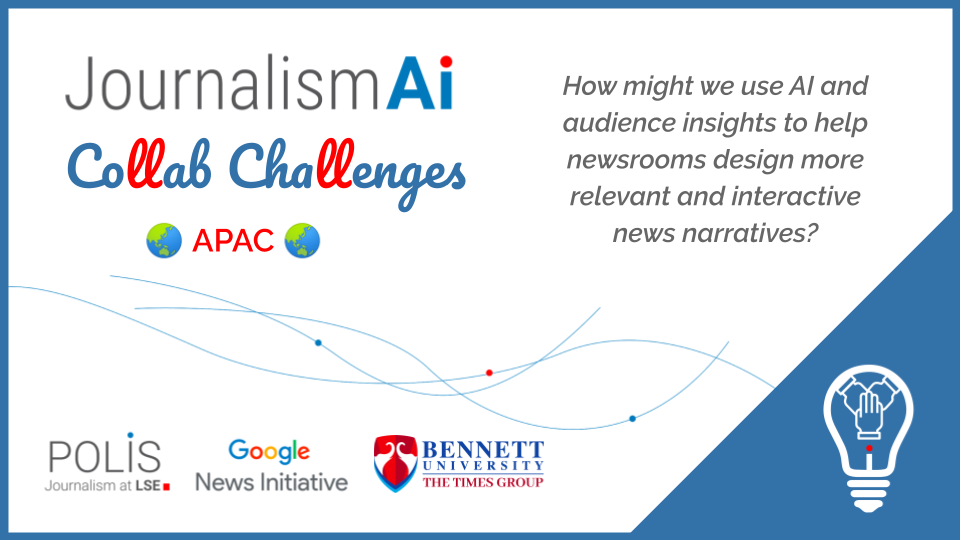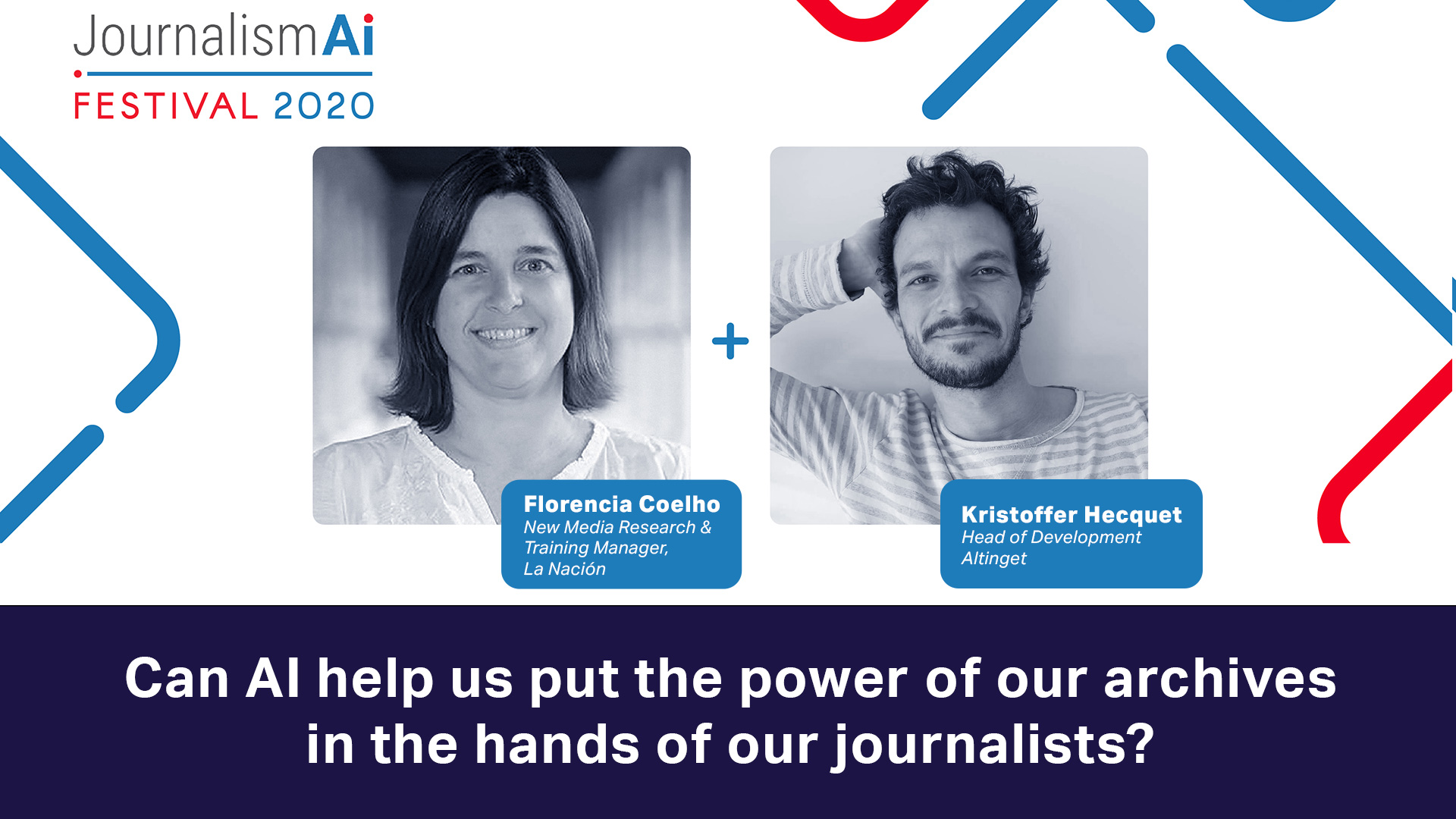As part of the 2020 JournalismAI Collab, an international team of journalists and media experts from the South China Morning Post (Hong Kong), Reach Plc (UK), Nice-Matin (France), and La Repubblica (Italy), came together to explore how AI-powered technologies can support newsrooms’ financial sustainability.
The team examined how AI techniques can play a role in strengthening their brands’ relationship with their readers. They looked at how AI can help newsrooms create meaningful and efficient transactions with their audiences and they collected real-world examples to share examples of best practice with other news organisations. In this presentation, Korey Lee and Romain Rouquier from the data team at the South China Morning Post and Alison Gow from Reach Plc shared the main lessons learned by the team.
Key Takeaways
- Engage with your audience. Defining churn is beneficial for predicting how long a user will be a customer. Have a deeper relationship with the audience to increase customer’s lifetime value.
- Every audience member interacts with your content in a different way. Segment and cluster users by behavioural patterns to identify trends. Check the amount of time when a user is active. How much time they spend on an article, how they engage with it, on what parts are they focusing on.
- Use diverse tactics. Understand how and why readers approach your content; design targeted advertising solutions and subscription models. Every company works in a different situation and context. Find the best tactics to analyse your audience.
- AI can make audience segmentation simpler and more impactful.
Understanding and anticipating our audience needs is one of the clear areas where AI can support a news media business.
Defining Churn
What are the ways to identify and qualify churn? Alison explains how to apply specific indicators and rely on AI-powered solutions to retain users:
- Definition of churn score: Estimates the state of churn for a given user at any given time through demographic information, browsing behaviour, historical purchase data.
- The leading indicators: Website activity, Login activity, Social activity (e.g. negative comments, dislike), Customer service (e.g. complaints, unsubscriptions), Newsletters activity (lower opening rate, unsubscribers), Smaller basket size, Downgrade subscriptions.
Three actions to reduce churn:
- Engagement strategy starts on the website as soon as the subscription starts.
- Get your reader’s insight: Target at-risk readers, meet subscriber’s expectation.
- Conduct A/B testing to understand the elements that perform better for the audience.
Loyalty KPIs & Best Practice Playbook
- RFV (Recency, Frequency, Volume): Score RFV on a per-user basis. Turn this into a percentage and reframe RFV. The algorithm recalculates each user’s score automatically every day and stores a historical record of each user’s score.
- Completion Rate: The amount of time a user spends on a page (Article lengths vary so time-on-page is not a comprehensive way to measure the engagement.)
- AET (Active Engaged Time): The amount of time when a reader is active on a page, from scrolling to playing a video or using a widget.
- Tactics: Auto-renew subscription, discount or bundles, email reminder, retargeted advertising externally, internal house ads, A/B test, newsletter sign up
- Segmenting Audience by intent (Decision Making Process)
Content Recommendation
Romain emphasised the importance of content recommendation and personalisation and indicated different recommendation models for different needs:
- Content-based Filtering: consume similar content
- Demographic Based Filtering: same location, same age group
- Collaborative Filtering: clustering by Python
Gamification of Loyalty
- Visualise the users’ activities by graphic such as badges and rankings (e.g. login, interactions, News habits, Budget, Challenges, Bookmarking, Favourite Tweets, etc)
- Recognise patterns of different degree of strength and complexity that would almost be missed by the human eyes
- Relevant Issues: Data Access (to track multiple platforms), Data Transparency (customer notification)
To find out more about the research of the team, you can explore online their full report:
How can AI help build audience engagement and loyalty?
Additional Resources
- Download the team’s presentation
- How to understand and engage with your customers using AI & ML
- Explore the complete study of the Collab team
This article was written by Hyunmu Lee, POLIS intern and LSE’s MSc student, and edited by Sabrina Argoub, JournalismAI Community Coordinator.
The article includes the main takeaways from one of the sessions of the 2020 JournalismAI Festival. You can watch all the Festival recordings on YouTube.
JournalismAI is a project of POLIS and it’s powered by the Google News Initiative.






